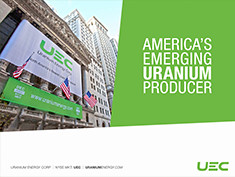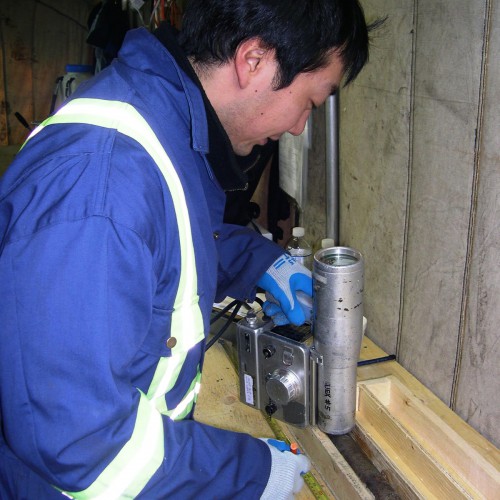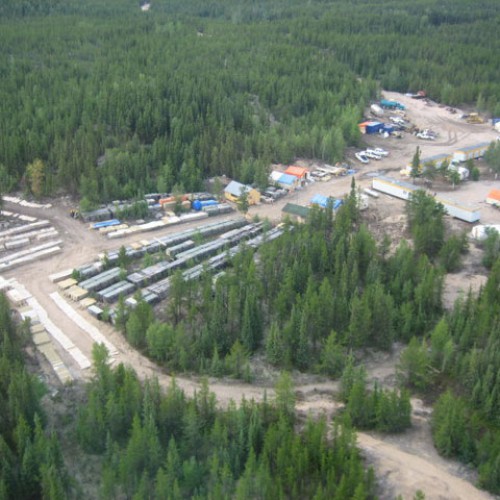Horseshoe-Raven
Horseshoe-Raven
UEC’s 100%-owned Horseshoe & Raven deposits is one of our most advanced Canadian exploration-stage projects. The deposits are located about 5 km south of Cameco’s Rabbit Lake Mill. Due to the high concentration of infrastructure in the area, the Horseshoe-Raven Project (the “Project”) has direct access to all-weather roads and power infrastructure.
The combination of the shallow depths to mineralization (between 100 and 450 m depth), uranium grades, and lack of sandstone cover, mean that the Horseshoe and Raven Deposits are potentially amenable to combined conventional open pit and underground mine development and should not require costly ground freezing to prevent water incursion or extra radiation protection measures routinely employed at many of Saskatchewan’s uranium operations.
In 2016, additional metallurgical testing was completed on the Horseshoe and Raven mineralization with the objective of evaluating the potential benefit of heap leach extraction in lieu of toll milling at one existing mills in the area. The test program was conducted by SGS Lakefield Laboratories and was successful at demonstrating that the Horseshoe and Raven deposits are amenable to heap leach processing. This scoping study was completed on the Horseshoe and Raven Deposits by JDS Mining in December 2016. The results of the study indicate that further investigations into heap leaching as an extraction method for the Horseshoe and Raven mineralization are warranted.
The Deposits are hosted within gently folded quartzite and arkose and represents a unique style of basement-hosted Athabasca-type uranium deposit. Uranium mineralization at the Horseshoe Deposit is approximately 800 m long and occurs at depths between 100 m to 450 m below surface. The mineralization occurs in several stacked and shallow plunging shoots that generally follow the fold axis of a gently folded arkose-quartzite package. Uranium mineralization is often best developed along the dilational zones that have developed along bedding planes. The Raven Deposit is located 500 m west-southwest of the Horseshoe Deposit and has been defined over a strike of 1,000 m and ranges between 100 m and 300 m in depth. The bulk of the uranium mineralization occurs in two sub-horizontal tabular zones that are oriented parallel to the axial plane of the folded host rocks package.
The mineral resources stated below are further outlined in the technical report titled, “Horseshoe-Raven Deposit Technical Report Summary, Athabasca Basin, Saskatchewan, Canada”, dated 30, December, 2022.
The mineral resources are based on 128,180 m of drilling in 404 holes for the Horseshoe deposit and 82,205 m of drilling in 311 holes in the Raven deposit. A uranium price of $52.00 was used to determine the prospects of economic extraction. Density was determined by dry bulk density at the assay laboratory from a total of 3,724 samples.
The 2022 mineral resource estimate for the two Property deposits, Horseshoe, and Raven, at a cut-off grade (”COG”) of 0.05% U3O8, total:
Horseshoe
- 23.59 million lb of U3O8 in the indicated mineral resource category comprising 4,982,500 tonnes grading 0.215% U3O8. All pounds are attributable to UEC
Raven
- 13.83 million lb of U3O8 in the indicated mineral resource category comprising 5,370,000 tonnes grading 0.117% U3O8. All pounds are attributable to UEC
Table 1‑1: Horseshoe and Raven Deposits Mineral Resource Estimates
| Horseshoe Deposit Uranium Resource* | ||||
| Deposit | Category | Quantity (Tonnes) | Average Grade U3O8 (%) | Total lbs U3O8 |
| Horseshoe | Indicated | 4,982,500 | 0.215 | 23,594,000 |
| Raven Deposit Uranium Resources* | ||||
| Deposit | Category | Quantity (Tonnes) | Average Grade U3O8 (%) | Total lbs U3O8 |
| Raven | Indicated | 5,370,000 | 0.117 | 13,832,400 |
*Mineral resources are not mineral reserves and have not demonstrated economic viability. There is no certainty that all or any part of the mineral resource will be converted into mineral reserve. All figures are rounded to reflect the relative accuracy of the estimates. Resources were estimated using a COG of 0.05% U3O8.




